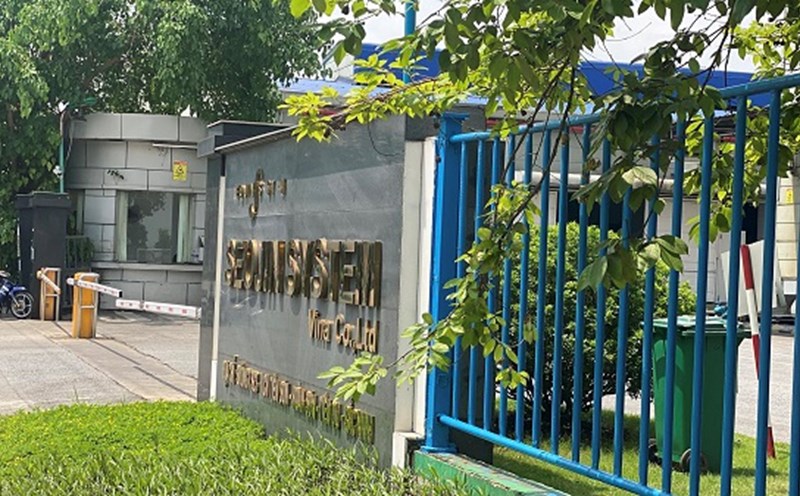Implementing Resolution No. 18-NQ/TW of the Central Committee on innovation and streamlining the organization of the political system to be streamlined, effective and efficient, the State Bank of Vietnam (SBV) has reorganized the system of provincial and municipal branches into 15 regional SBV branches. This organization also meets the requirements for implementing Resolution No. 60-NQ/TW dated April 12, 2025 of the 13th Party Central Committee on the arrangement of provincial-level administrative units.
Accordingly, from July 1, 2025, the system of 15 regional SBVs will officially come into operation synchronously with the new local government apparatus in 34 provinces and cities after the merger. In particular, the State Bank of Vietnam, Area 1 (Hanoi City) and Area 2 (Ho Chi Minh City, Dong Nai and neighboring localities) have been operating since March 1, 2025.
The arrangement is carried out on the basis of merging previous provincial and municipal branches, ensuring that there are no new organizational units, minimizing the impact on cadres and personnel, ensuring asset safety and monetary security. Each regional SBV will perform the function of state management of currency, banking and foreign exchange activities in 2 to 6 provinces and cities.
In terms of geography and transportation, the arrangement of the headquarters of the State Bank of Vietnam in the area is calculated reasonably to facilitate management and direction of operations.
The structure of the 15 regional SBVs is as follows:
1. SBV Area 1: Hanoi City.
2. SBV Region 2: includes 2 provinces/cities: Ho Chi Minh City (Ho Chi Minh City+Ba Ria-Vung Tau+ Binh Duong), Dong Nai (Dong Nai+Binh Phuoc). Headquarters in Ho Chi Minh City.
3. SBV Area 3: includes 3 provinces: Son La, Dien Bien, Lai Chau. Headquartered in Son La province.
4. SBV Region 4: includes 3 provinces: Phu Tho (Phu Tho+Hoa Binh+Vinh Phuc), Tuyen Quang (Tuyen Quang+Ha Giang), Lao Cai (Lao Cai+Yen Bai). Headquartered in Phu Tho province.
5. SBV Area 5: includes 3 provinces: Thai Nguyen (Thai Nguyen+Bac Kan), Cao Bang, Lang Son. Headquarters in Thai Nguyen province
6. SBV Area 6: includes 2 provinces/cities: Hai Phong city (Hai Phong+Hai Duong), Quang Ninh. Headquarters in Hai Phong city.
7. SBV Area 7: includes 2 provinces of Ninh Binh (Ninh Binh + Nam Dinh + Ha Nam), Thanh Hoa. Headquartered in Thanh Hoa province.
8. SBV Area 8: includes 3 provinces: Ha Tinh, Nghe An, Quang Tri (Quang Tri+Quang Binh). Headquarters in Ha Tinh province
9. SBV Area 9: includes 3 provinces/cities: Da Nang city (Da Nang+Quang Nam), Quang Ngai (Quang Ngai+ Kon Tum), Hue city. Headquartered in Da Nang city.
10. SBV Region 10: including 2 provinces: Khanh Hoa (Khanh Hoa+Ninh Thuan), Lam Dong (Lam Dong+Binh Thuan+Dak Nong). Headquartered in Khanh Hoa province.
11. SBV Area 11: includes 2 provinces: Dak Lak (Dak Lak+Phu Yen), Gia Lai (Gia Lai+Binh Dinh). Headquartered in Dak Lak province.
12. SBV Region 12: includes 2 provinces: Hung Yen (Hung Yen+Thai Binh), Bac Ninh (Bac Ninh+Bac Giang). Headquartered in Hung Yen province.
13. SBV Area 13: includes 2 provinces: Dong Thap (Dong Thap+Tien Giang), Tay Ninh (Tay Ninh, Long An). Headquartered in Dong Thap province.
14. SBV Region 14: includes 2 provinces/cities: Can Tho city (Can Tho+Hau Giang+ Soc Trang), Vinh Long (Vinh Long+Ben Tre+Tra Vinh). Headquarters in Can Tho city
15. SBV Region 15: includes 2 provinces: An Giang (An Giang+Kien Giang), Ca Mau (Ca Mau+Bac Lieu). Headquartered in An Giang province.
Notably, the organization does not increase the number of departments under the regional State Bank, while still ensuring the inheritance of the old organizational model, in accordance with the practice of administrative merger. Based on the guidance of the Central Organizing Committee and the Ministry of Home Affairs, the SBV will coordinate with localities to establish a Party organization at the regional SBV, in accordance with the direction of the Secretariat in Conclusion No. 151-KL/TW dated April 25, 2025.
This is considered an important step in the process of administrative reform and modernization of the institutional model of the State Bank, thereby contributing to improving the effectiveness of state management of currency, ensuring the stable, safe and integrated development of the local banking system.











